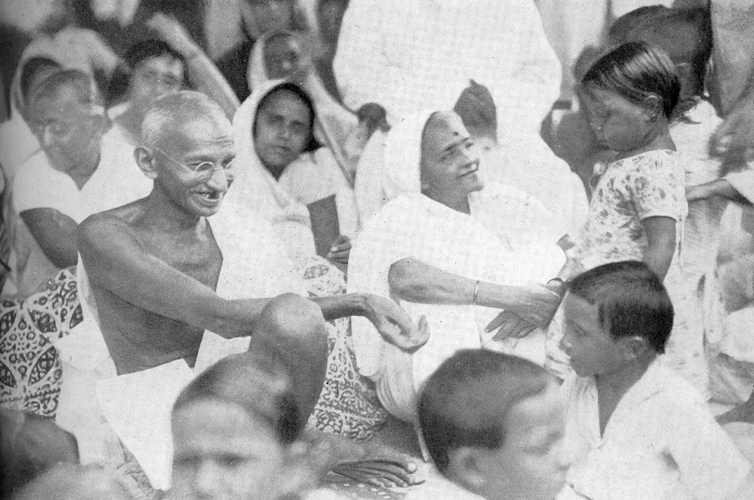A piece of garment is a dress to be worn, a statement to be made, an identity to be asserted or a means to maintain or sustain status quo. Bring the element of gender, and the humble garment sits at the helm of societal politics. Garment and dress have for long reinforced social standings/status. It has also been a tool to maintain the status quo of women in society. On the other hand, garments and dress are also used to dispel to the set norms of gender in society. A rebellious teen may brazenly display his/her sexuality via the dress that is worn. He or she might also choose to de-sexualize by breaking from the expected way of dress assigned to her gender. Viewed from a gendered perspective, garment and dress has been accused both of being used to control women’s sexuality as well as turn them into objects giving sexual pleasure. (Vikas Shah MBE, 2012).
Celebrities from various walks of life like film stars, singers, models and also players have been seen to tweak and blend gender norms through their dress. While their individual agenda (may be publicity or image building) is difficult to be known, their dress senses has clearly influenced the general public, especially the young. They however at the same time are challenging gender norms uphold so dearly.
Let us take the example of actor Ranveer Singh. While some describe his style as wacky, some describe it as eccentric, some also called him the best dressed man. But what I see is a man walking on the fine lines of masculine and feminine. Carrying animal prints, florals and pleated skirts with equal ease as a monochrome suit, he dares anyone to call him ‘dressed like a girl’. Gone are the days when prints and colours were tied with the feminine and pant suits to the masculine. Fashion effortlessly denies to remain confined to the gender divisions. While women have taken to ‘men’s clothes’ for a long time, men wearing women’s clothes or feminine fabric has been simply laughable, while both had in the past been scorned upon.
Harry Styles, the British singer, songwriter and member of the boy band One Direction is setting a breaking point in gender-based style. This international celebrity is sometimes seen in multi-coloured nails, sometimes in frilled collars and sleeves, and sometimes in bold pinks. Indian art curator Himanshu Verma is contesting fashion trends by draping himself in saree. Many a times Verma has alluded to the gender fluidity of the drape and that it can be worn by men without losing his ‘masculinity’. There are other men too who have developed a love affair with the saree and believes that it lets them get in touch with their feminine side.
The beauty and fashion industry has always accepted people form multiple gender identities. However, on the ramp the pressure of the binaries exists. Here, the androgenous models have blurred these lines of gender. These gender non-conforming men and women (models) showcases men’s and women’s clothes with equal ease. It is in fact an irony that these androgenous models traversing of gender binaries is a sneer at the commercial beauty industry feeding us with daily images of the desired masculine and feminine. Andreja Pejic, Rain Dove are names that are well recognized in the world of modelling. In the Indian scenario young names like Pooja Mor, Kean Alvares, Lemuel Huffman reverberates. Even designers and high-end labels are increasingly creating pieces that are not limited to the boundaries of gender.
Cross dressing, however, is not a novel art of the post-modern era. Rather, it has been practiced across cultures through centuries. While female cross dressers, who dresses as men, might be perceived as imbibing the strength and warrior like qualities of men, men on the other hand, when cross dresses as women are perceived often as emasculated-treading on the edges of being ridiculous. Many cross dressing male entertainers of present-day mass media often emulate this image of emasculation and ridicule to offer fast and cheap entertainment. Let us take the example of the very popular Kapil Sharma Show where emasculated cross dressing men are seen providing comic relief. This trend is in conflict with certain traditions of cross dressing where men aim to be in touch with their effeminate side.
Historically cross dressing has been mostly associated with rituals and practices. Religion has been a factor for encouraging men to cross dress-sometimes to expresses devotion to the Lord and present oneself to Him. The history of women cross dressers encourages a political reading of the practice. Recorded cases of women crossing dressing as men dates back to the early Christian church, where many saints upon their death were discovered to be actually female. In the end, dress that has always defined one’s gender role has also been a tool to subvert the same.
References:
Vikas Shah MBE: The Role of Fashion in Human Culture, https://thoughteconomics.com/the-role-of-fashion-in-human-culture/
Shweta Mehta Sen: Himanshu Verma Talks About How A Saree Is Gender-Fluid, https://www.mansworldindia.com/style-luxury/himanshu-verma-art-sarees-annual-festival-wear-saree-man/
Reetamoni Das is an academic based in Guwahati, she writes extensively on culture and politics.













